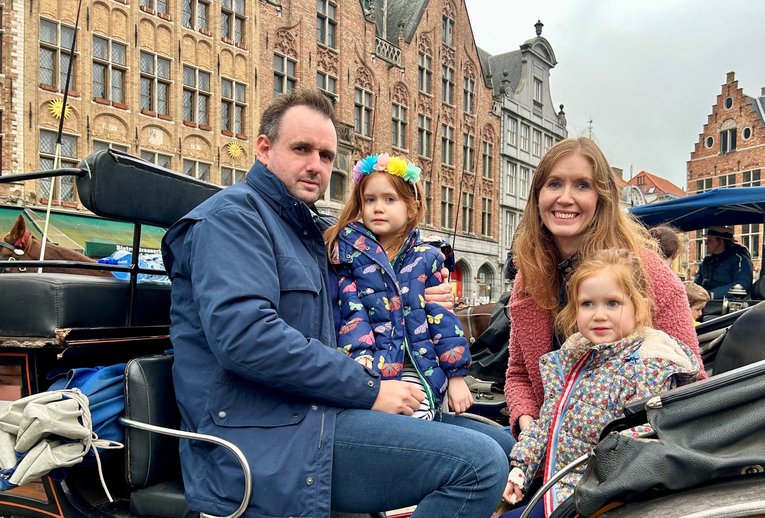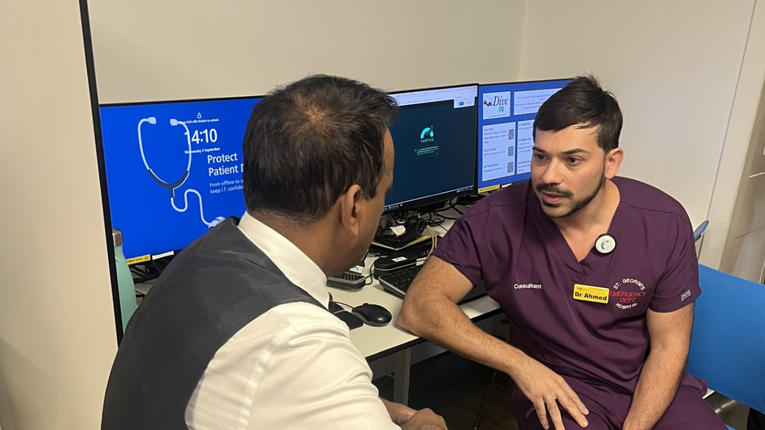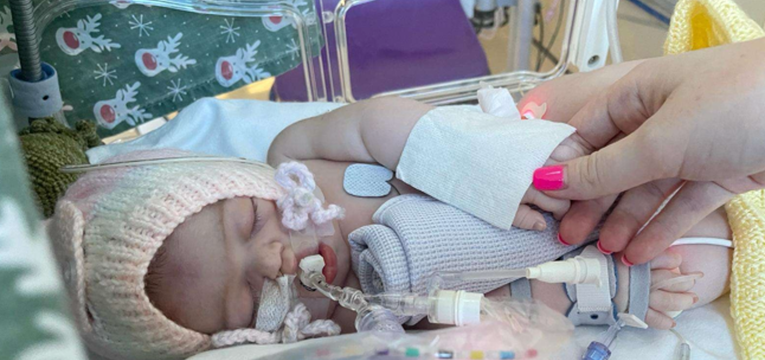
https://www.gosh.nhs.uk/news/hope-better-treatments-rare-childhood-cancer-disease-origin-uncovered/
Hope of better treatments for rare childhood cancer as disease origin is uncovered
5 Nov 2020, 9:16 a.m.
GOSH researchers are part of a team of scientists who have identified how a rare form of childhood cancer may originate, according to a new study published today in the New England Journal of Medicine.
The team of researchers from Great Ormond Street Hospital for Children NHS Trust, the UCL Great Ormond Street Institute of Child Health, Wellcome Sanger Institute and the University of Cambridge, Cambridge University Hospitals NHS Foundation Trust hope the findings will provide new options for treatment for bilateral neuroblastoma cancers.
Bilateral neuroblastoma
Neuroblastoma is a highly aggressive childhood cancer. About 100 children each year in the UK are affected. It develops from specialised nerve cells - neuroblasts - left behind from a baby's development in the womb.
Neuroblastoma most commonly occurs in one of the adrenal glands above the kidneys. There are several different types of neuroblastoma, with some more aggressive than others. Bilateral neuroblastoma occurs in rare cases where tumours form on both sides of the body - for example in both adrenal glands.
It’s usually assumed that tumours at multiple sites are metastatic and have spread from an original primary tumour.
Tracking the origin of bilateral tumours
Researchers studied the genomes of tumours from multiple sites in two patients with the condition. In both cases, the tumours within a patient arose separately from each other and originated during the very early stages of their development, within a few cell divisions after fertilisation. Both children in the study had inherited a genetic mutation that predisposed them to cancer.
Understanding if tumours within a patient are independent or not is vital information for clinicians when deciding the best treatment options. Metastatic tumours are more aggressive and require more intensive treatment than tumours that have remained within their original tissue.
Professor John Anderson, Professor of Experimental Paediatric Oncology and senior author of the study from the UCL Great Ormond Street Institute of Child Health and Great Ormond Street Hospital for Children NHS Foundation Trust, said:
“This is the first time we’ve been able to prove that bilateral neuroblastoma tumours can be independent entities. It is essential for each patient that clinicians can make the distinction between an aggressive tumour that is spreading, and a set of more benign tumours that are localised. If tumours haven’t metastasised, we can consider less intensive treatments, with fewer side effects.”
Next steps
The researchers suspect that other types of bilateral tumours may also have similar patterns of development. They hope that their findings will be important more widely for analysing and treating such cancers.
This work was funded by Children with Cancer and Wellcome.

Scientists discover clues to help children with rare muscle disease
New ground-breaking research by experts at Great Ormond Street Hospital (GOSH) and University College London (UCL) has led to an exciting discovery that could help children with the rare muscle disease, juvenile dermatomyositis (JDM).

GOSH-led trial of AI-scribe technology shows ‘transformative’ benefits for patients and clinicians across London
A major GOSH-led study has found that AI-scribing technology can significantly reduce clinician workload while improving patient care

What do bush babies, tamarin monkeys, and mouse lemurs have that humans don’t?
GOSH imaging researchers have worked with teams in Harvard in the USA to work out how and when our pelvises developed to be different from other animals.

Nanodiamonds and hormones used in rare condition to promote lung growth
An international research team led by GOSH, UCL and KU Leuven in Belgium, is using 3D-printing and nanodiamonds, to design treatments that could help babies repair their damaged lungs in the womb.
